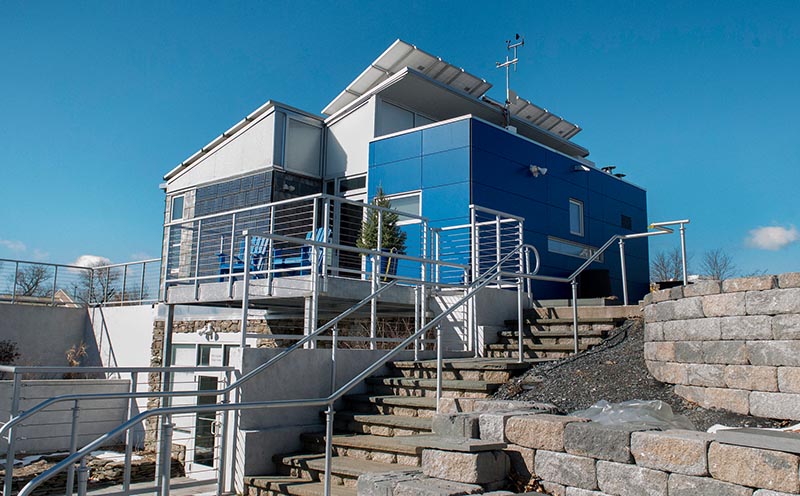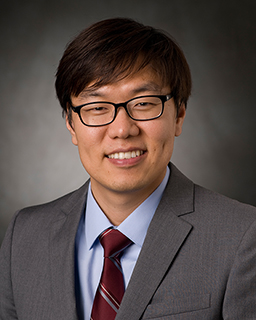
Donghyun Rim will conduct tests at the University’s Solar Home, a 100% renewable energy-powered, full-scale test house near the Bryce Jordan Center on University Drive. IMAGE: PATRICK MANSELL
Architectural engineering professor receives NSF CAREER grant
4/22/2020
By Mariah Chuprinski
UNIVERSITY PARK, Pa. — Donghyun Rim, assistant professor of architectural engineering in the Penn State College of Engineering, was recently awarded a $500,000, five-year Early Career Development Program (CAREER) grant from the National Science Foundation (NSF).
With this grant, Rim will study modeling and experimental validation of airborne nanoparticles in indoor environments.
“Nanoparticles are invisible but there are plenty of them inside buildings because of various human indoor activities,” Rim said. “People cook and use products like candles, perfume and cleaning solutions which all generate unwanted nanoparticles.”
Due to these human activities, nanoparticles are often released near human bodies, according to Rim, creating a “Pig Pen” effect, referring to the character in the cartoon “Peanuts,” otherwise known as a personal cloud. Many times, the concentrations of particles around the human breathing zone — or around the nose and mouth — are much higher, which can negatively affect inhaled air quality.
“As a result, we could end up breathing more nanoparticles in indoor environments, and over time, studies report that these particles can cause respiratory, cardiovascular or neurological symptoms,” Rim said.
Along with the help of graduate students, Rim will develop a computational fluid dynamics model to predict nanoparticle concentrations that vary with indoor environmental conditions.
“We are going to test how nanoparticle concentrations in the breathing zone are modulated or influenced by indoor building operations like heating, cooling or ventilation,” Rim said. "We will ask the question: how does the personal cloud phenomenon change with different HVAC and source conditions?”
Creating the computer model will be useful, according to Rim, because it will incorporate many different building and source characteristics to predict indoor nanoparticle concentrations — a process that can easily be replicated by other researchers using the same model.
Eventually, once perfected, the model could be used by anyone, including building designers, mechanical engineers, operators and even policymakers when making decisions about buildings and building systems development, according to Rim.
The model could be especially useful to test new sustainable buildings, which often feature airtight ventilation systems to save on energy use.
“In those buildings, there is an emphasis on lowering energy use but not improving ventilation, which can have health implications for people living in them that result from a buildup of nanoparticles,” Rim said.
To validate the model, Rim also will conduct tests at the University’s Solar Home, a 100% renewable energy-powered, full-scale test house near the Bryce Jordan Center on University Drive.
“I will conduct experiments using common indoor sources of nanoparticles, like cleaning, cooking or using personal products, in order to make sure the model is accurate and can be applied to realistic buildings,” Rim said.
Once validated, the research will be open source, meaning anyone can use the model for similar testing in the future.
“Donghyun’s research and his NSF CAREER Award is a timely response to the need to improve our understanding on the effects of nanoparticles on the health and well-being of building occupants,” said Sez Atamturktur, Harry and Arlene Schell Professor and head of the Department of Architectural Engineering. “NSF awards CAREER grants to promising investigators, like Donghyun, with transformative ideas to conduct impactful research for the public good.”




